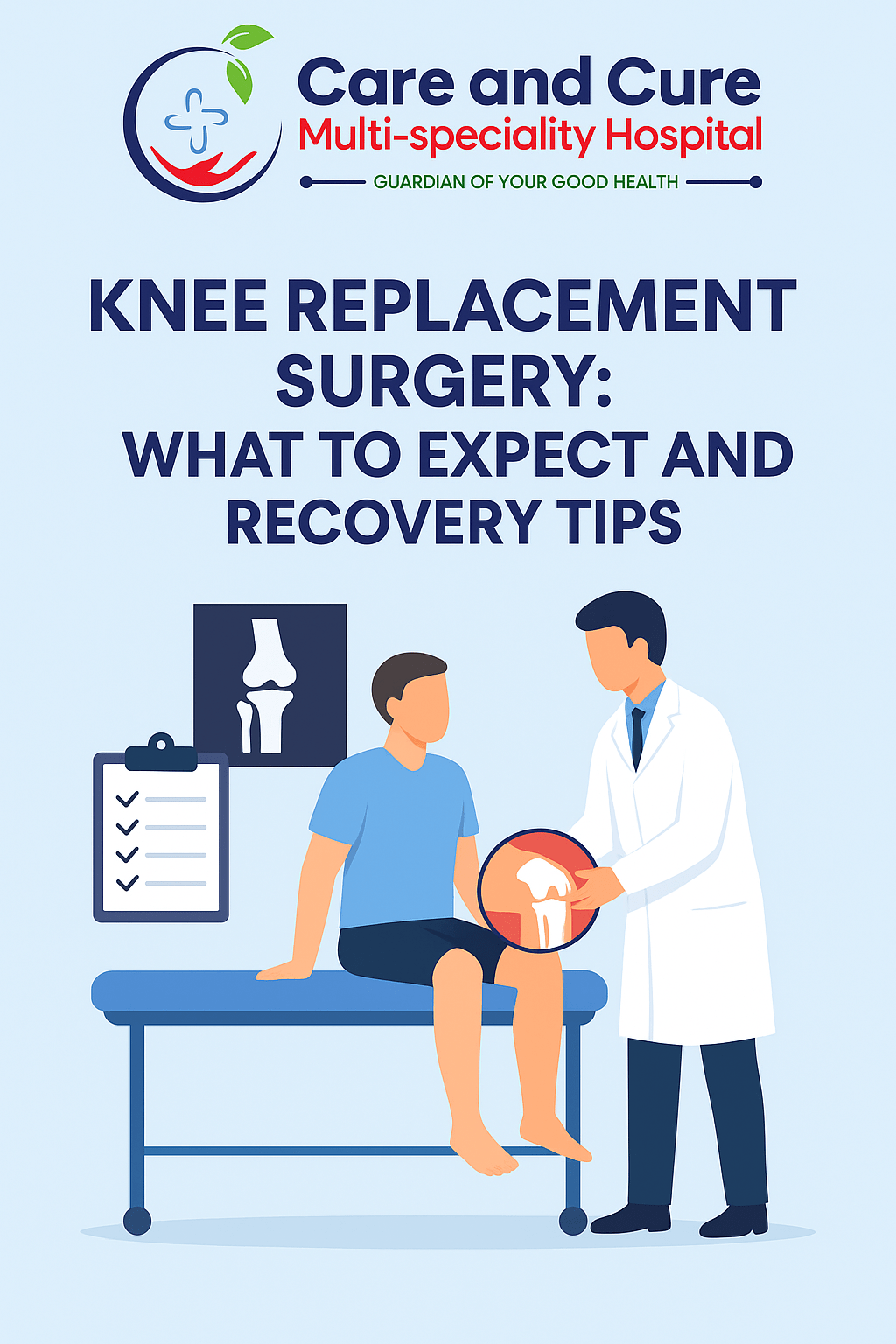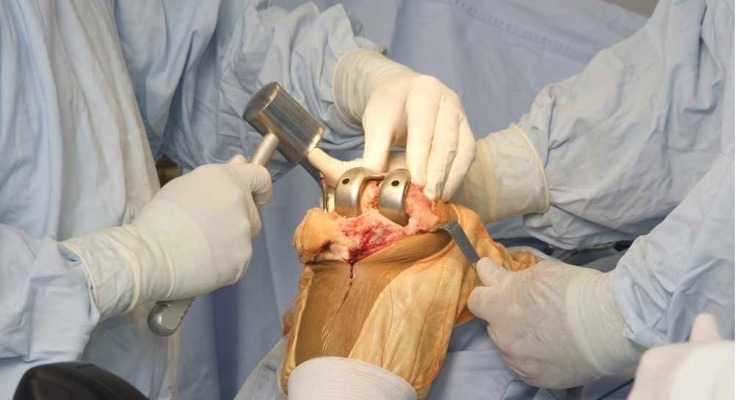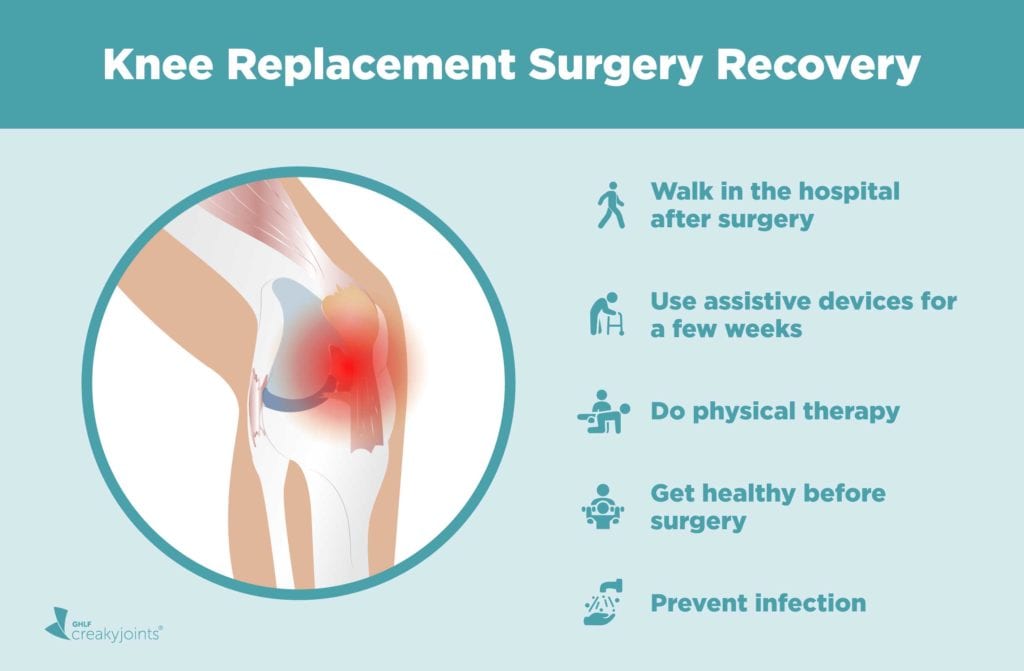Knee pain can restrict you from doing anything, affect your lifestyle, and turn day-to-day activities into a chore. For individuals with advanced arthritis or extensive knee injury, knee replacement surgery can be life-altering. So what does occur in this surgery, and how do you prepare for a successful recovery?
This website offers a concise and informative overview of what to anticipate from knee replacement surgery—pre, during, and post. We’ll also offer tips in rehabilitation to facilitate healing well and getting back to your routine.
What Happens During Knee Replacement Surgery?
Knee replacement surgery, also called knee arthroplasty, is a carefully planned procedure designed to relieve chronic knee pain and restore joint function—especially in patients suffering from osteoarthritis, rheumatoid arthritis, or severe knee injury. Understanding what actually happens during the surgery can ease anxiety and help patients feel more prepared for the journey ahead.
Pre-Surgery Preparation
Before surgery, patients undergo:
Preoperative evaluation: Includes blood tests, imaging (X-ray/MRI), and physical assessments.
Anesthesia consultation: Most patients receive spinal or general anesthesia, depending on health and comfort.
Fasting & medication adjustments: Patients are usually asked to fast for 6–8 hours and may be advised to stop certain medications temporarily.
Step-by-Step Surgical Procedure
Incision:
A small incision (6 to 10 inches) is made over the knee to expose the damaged joint.Removal of Damaged Bone & Cartilage:
Surgeons trim away the worn-out cartilage and bone at the ends of the femur (thigh bone) and tibia (shin bone) using precision tools.Implant Placement:
Custom-fit metal components are attached to the prepared bone surfaces. A plastic spacer is inserted between these metal parts to ensure smooth movement.Patella Resurfacing (Optional):
In some cases, the kneecap (patella) is also resurfaced with a plastic component for enhanced joint mobility.Closure:
The incision is stitched or stapled closed, and the knee is bandaged and braced.Duration:
Most knee replacement surgeries take 1 to 2 hours.
Types of Knee Replacement Surgery
Total Knee Replacement (TKR):
The most common, in which both surfaces of the knee joint are replaced.
Partial Knee Replacement (PKR):
The affected portion of the knee is replaced and a greater part of the natural joint is left intact.
Revision Knee Replacement:
A reoperation to replace or correct a previously placed old prosthesis.
Possible Risks and Complications
While the surgery is safe and widely performed, potential risks include:
Infection
Blood clots
Nerve damage
Implant loosening or wear
Stiffness in the knee
Orthopedic doctors at Care and Cure Hospital with expertise in the specialty guide patients through personalized treatment plans for each of the above procedures.
Who Could be a Candidate for Knee Replacement Surgery?
Knee replacement is most often suggested to patients with:
- Chronic pain of the knee that won’t improve with non-surgical treatment
- Limited mobility that impacts daily activity
- Severe osteoarthritis or rheumatoid arthritis
- Abnormalities of the knee
An orthopedic evaluation—comprising imaging studies and physical exams—assists in deciding whether you are a good surgical candidate.
Preparation Before Knee Replacement Surgery
Preparation beforehand might make your surgery and recovery less complicated. The following are things to consider:
Preoperative Steps
- Medical Evaluations: Your doctor may require lab work, X-rays, and ECGs.
- Prehabilitation: Stronger, more efficient muscle conditioning exercises to get your body ready.
- Medication Review: Tell your physician about all medication and supplements.
- Home Preparation: Create a quiet recovery space at home with items in easy reach.
You can find additional information about joint and orthopedic care on our hospital’s main services page.
What to Expect During Surgery
Knee replacement surgery usually is done under general or spinal anesthesia and lasts about 1 to 2 hours. The following is a step-by-step breakdown:
- Anesthesia is given.
- The surgeon incises through muscle and tissue over the knee.
- Cartilage and bone damage is removed.
- Artificial implants are inserted and secured.
- The wound is closed and the knee is wrapped.
Fine prosthetics and current methods performed at Care and Cure Hospital minimize complications and enhance outcomes of surgery.
Tips for Recovery after Knee Replacement Surgery
Knee replacement recovery requires time, but judicious adherence to good practice facilitates speedy recovery and mobilization.
Pain Management
Adhere to prescribed pain medication
Use ice packs to reduce swelling
Relax and breathe deeply to alleviate discomfort
Physical Therapy
Start exercising as recommended, usually within 24 hours post-surgery
Follow a customized rehabilitation regimen
Incrementally raise activity level
Wound Care
Keep incision clean and dry
Monitor for infection (redness, discharge, fever)
Avoid immersing the wound in water
Nutrition and Fluid
Consume a well-balanced diet full of protein, vitamins, and mineral
Consume plenty of water to enable tissues to heal
Home Modifications for Safety
Install handrails and grab bars in bathrooms
Use walker or cane to help you
Stay away from stairs, if possible, for first few weeks
For individual post-operative care, do not delay in reaching our care team.
Recovery Timeline: Week-by-Week
🔹 Day 1 to Week 1 – Hospital Stay & Early Mobilization
Patients are encouraged to begin moving the knee within 24 hours after surgery.
Physical therapy starts early, focusing on gentle movements to improve range of motion.
Most patients are discharged within 3 to 5 days, depending on health and mobility progress.
Use of walker or crutches is common during this period.
🔹 Weeks 2 to 4 – At-Home Recovery
Continue daily exercises as prescribed by the physiotherapist.
Pain and swelling are managed with medications, icing, and elevation.
Stitches or staples (if used) are usually removed around day 14.
Gradual transition to walking without aids, based on strength and balance.
🔹 Weeks 5 to 8 – Strength & Mobility Building
Physical therapy intensifies with focus on muscle strengthening and bending the knee up to 90–120 degrees.
Driving may be resumed (typically after 6 weeks) if the patient is off pain medications and can control the leg well.
🔹 Weeks 9 to 12 – Return to Normal Activities
Most patients resume daily tasks like climbing stairs, shopping, or desk work.
Swelling reduces significantly, and knee function continues to improve.
🔹 After 3 Months – Long-Term Recovery
Walking long distances and low-impact activities (like swimming, cycling, yoga) become easier.
Full recovery may take up to 6–12 months depending on age, fitness level, and commitment to rehab.
Possible Hazards and How to Avoid Them
Generally safe, knee replacement surgery does carry some risks:
- Blood clots
- Infection
- Trouble with the implant or dislocation
- Nerve or blood vessel damage
Reducing Risk
- Follow pre- and post-op orders to the very letter
- Move around (as recommended) to prevent clots
- Report symptoms that don’t feel right as soon as possible
Care Guidelines for Better Recovery
1. Follow Your Physiotherapy Plan:
Regular physiotherapy sessions and at-home exercises are the cornerstone of successful recovery.
2. Take Medications as Prescribed:
Pain relief, anti-inflammatory drugs, and antibiotics (if prescribed) should be taken on time to prevent infection and reduce discomfort.
3. Keep the Wound Clean and Dry:
Proper wound care is essential to avoid infections. Watch for redness, oozing, or unusual pain around the incision.
4. Use Ice and Elevation:
Apply ice packs for 15–20 minutes several times a day and elevate your leg to control swelling.
5. Eat a Nutritious Diet:
A balanced diet rich in protein, calcium, iron, and fiber supports faster healing and strengthens bones.
6. Avoid High-Impact Activities:
Activities like running, jumping, or twisting motions should be avoided permanently to protect the implant.
7. Monitor for Warning Signs:
Seek immediate medical attention if you experience:
Fever
Chest pain or shortness of breath
Swelling in the calf
Persistent bleeding from the wound
Discover more about care in-depth at Care and Cure Hospital, as well as how our surgical teams assist in reducing post-operative complications.
Conclusion: Towards Pain-Free Life
Replacement of the knee will most likely enhance the well-being of patients with chronic joint pain. With current surgical methods and well-planned rehabilitation, the majority of patients can expect to go back to active, pain-free existence.
If you’re considering knee replacement or have questions about recovery, our team at Care and Cure Hospital is here to help. Get in touch today to take the first step toward healing and mobility.
FAQs
What is knee replacement surgery?
Knee replacement surgery, also called knee arthroplasty, is a procedure where damaged or worn-out parts of the knee joint are removed and replaced with artificial implants. It helps relieve pain, improve mobility, and restore daily activity in people with severe arthritis or injury.
When should someone consider knee replacement?
If knee pain is constant, affects sleep, limits walking, or doesn’t get better with medicine or therapy — surgery might be needed. People with osteoarthritis, rheumatoid arthritis, or old injuries often benefit the most. It’s about improving quality of life.
Is knee replacement surgery safe?
Yes, it’s a common and safe procedure when done by experienced surgeons. At Care and Cure, we use advanced tools and techniques, like minimally invasive surgery and computer navigation, to make recovery smoother and reduce risks like infections or stiffness.
How long does it take to recover from knee replacement?
Most patients can walk with help in 1–2 days and go home within 3–5 days. Full recovery takes 6–12 weeks, depending on your age, fitness, and therapy. Doing physiotherapy daily is key for regaining strength and full motion.
What can I do to recover faster after knee replacement?
Follow your physiotherapy plan strictly, keep moving (even slowly), and maintain a healthy diet. Avoid sitting too long, and use support devices (walker/stick) as advised. Don’t skip follow-ups with your doctor. Staying active is the best way to heal quickly.



